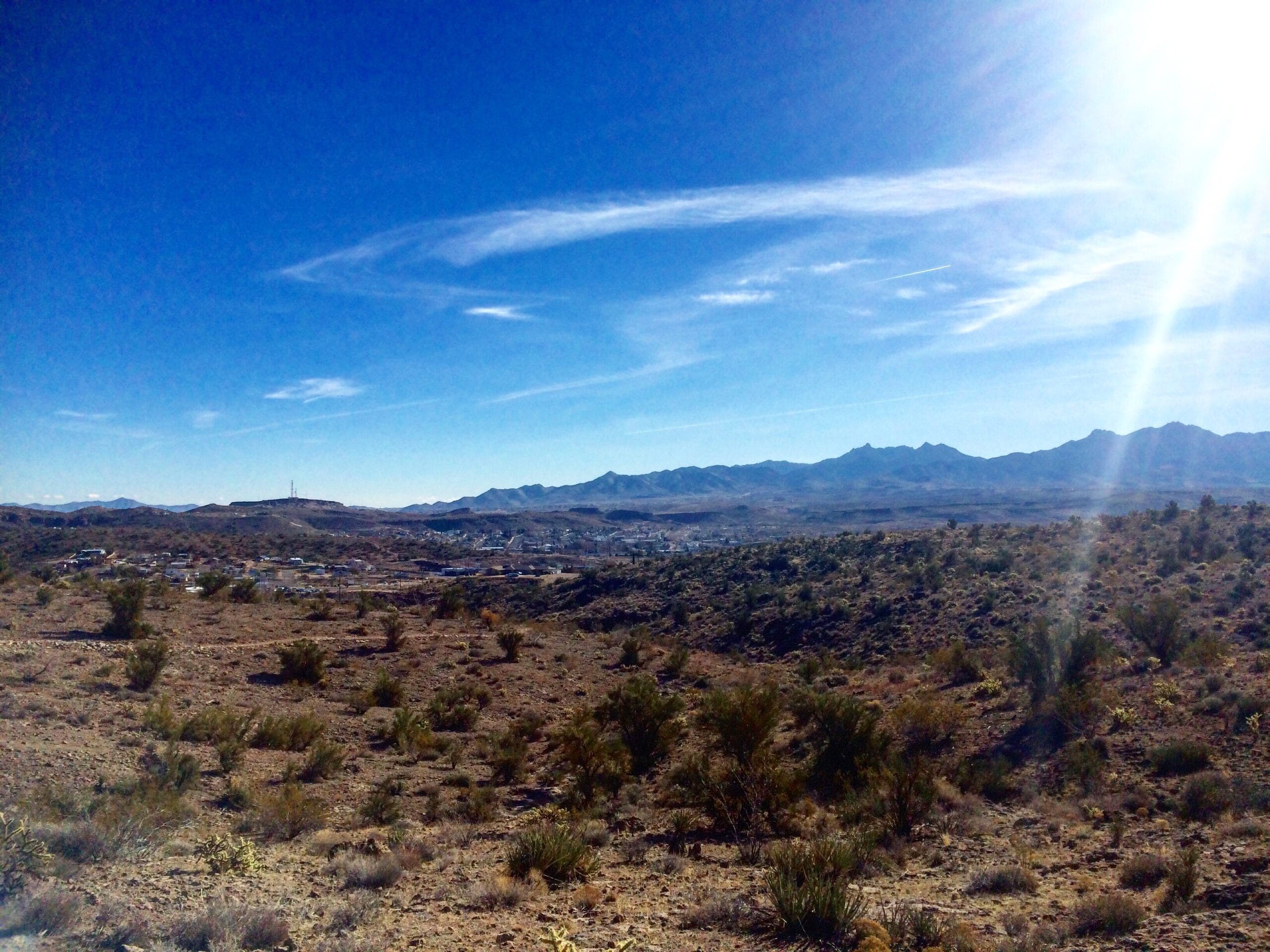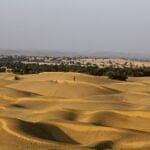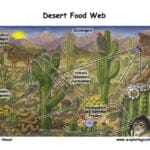Kingman, Arizona, a historic Route 66 town nestled in the Mojave Desert, has experienced a consistent upward population trend. This article offers a comprehensive overview of Kingman’s population dynamics, demographics, economic landscape, and its unique appeal as a place to live.
Understanding Kingman’s Population Growth
Kingman’s population growth suggests a steady increase in residents. World Population Review projects the 2024 population to be around 36,146, a substantial increase from the 2020 census figure of 32,689. This represents an approximate 10% increase in just four years, with an annual growth rate of roughly 2.3%. This growth likely stems from a combination of factors, including its strategic location, relatively affordable cost of living, and expanding job market.
Kingman’s Population Growth Trajectory
- 2020 Census: 32,689
- 2022 Estimate: 33,100 (Data USA)
- 2023 Estimate: 35,334 (Neilsberg)
- 2024 Projection: 36,146 (World Population Review)
- Annual Growth Rate: ~2.3%
This consistent growth suggests that Kingman continues to attract new residents, potentially driven by factors like affordability and access to outdoor recreation.
Who Lives in Kingman? A Demographic Overview
Kingman’s demographic profile reveals a diverse community. The median age is 42.1, with 41.4 for males and 43 for females, indicating a slightly older demographic compared to national averages. Approximately 23.8% of the population is 65 or older, suggesting a substantial senior presence. The voting-age population (18+) stands at 22,998, split almost evenly between men and women (51% male, 49% female).
Ethnic Diversity in Kingman
While predominantly White (Non-Hispanic), Kingman’s ethnic makeup is becoming increasingly diverse. About 7% of residents identify as multiracial, suggesting a growing blend of cultures and heritages. Around 14.9% of Kingman’s population identifies as Hispanic or Latino, further enriching the city’s cultural tapestry. A small percentage (5.79%, or approximately 1.91k people) are foreign-born. While the largest ethnic groups are White (Non-Hispanic) and White (Hispanic), further investigation into the more nuanced demographics might reveal interesting trends.
| Race/Ethnicity | Percentage |
|---|---|
| White | ~85% |
| Multiracial | ~7% |
| Hispanic or Latino | ~15% |
| Other (including Native American, Asian, Black, etc.) | Remaining Percentage |
It’s important to remember that discrepancies may exist between data sources, and understanding how data is collected and categorized is crucial for accurate interpretation. Some research suggests that multiracial populations may be undercounted. The evolving understanding of how to categorize Hispanic or Latino identity, as an ethnicity rather than a race, also adds complexity to these demographic analyses.
Kingman’s Economic Landscape
Kingman offers a relatively affordable cost of living compared to other parts of Arizona and the West Coast. The median household income is around $56,360. The average commute time is a relatively short 18.2 minutes, and most residents drive alone to work, with an average of two cars per household. This economic profile may appeal to those seeking a more balanced work-life integration.
Key Economic Indicators:
- Median Household Income: $56,360
- Average Commute Time: 18.2 minutes
- Car Ownership: 2 cars per household
Further exploration into Kingman’s economic sectors, including healthcare, tourism, retail, manufacturing, recreation, and transportation, would provide a more comprehensive picture of the job market and its potential for growth.
Living in Kingman: Pros and Cons
Kingman’s appeal extends beyond economic factors. Its location, 105 miles southeast of Las Vegas and 180 miles northwest of Phoenix, provides access to larger cities while maintaining a small-town atmosphere. The city covers an area of 34.8 square miles, nestled within Mohave County, where it serves as the county seat.
Kingman’s popularity also stems from its historical significance along Route 66, its natural beauty, and its welcoming community spirit. Outdoor enthusiasts can explore nearby Hualapai Mountain Park and the Grand Canyon Caverns. The town boasts a rich history as a transportation hub, originating with Beale’s Wagon Road and evolving through the Route 66 and Interstate 40 eras. This history has likely influenced Kingman’s growth and cultural identity.
Weighing the Advantages and Disadvantages
Like any location, Kingman has both advantages and disadvantages. While a lower cost of living, strong sense of community, and access to outdoor recreation are appealing, the limited job opportunities and extreme desert climate may be factors to consider.
| Pros | Cons |
|---|---|
| More affordable cost of living | Limited job opportunities |
| Strong sense of community | Extreme desert climate |
| Access to outdoor recreation |
Kingman’s Claim to Fame
Kingman’s fame rests on a combination of historical significance, Route 66 heritage, cinematic appeal, natural beauty, and community spirit. Its history as a transportation hub, its role as a key stop on Route 66, and its appearance in films like “Edge of Eternity” and “Roadhouse 66” all contribute to its unique identity. The presence of the Ford Proving Grounds has also played a role in its economic development and connection to the automotive industry.
| Feature | Description |
|---|---|
| History | Located on Beale’s Wagon Road, a precursor to Route 66 and I-40; important railroad and commerce hub. |
| Route 66 | A key stop on the Mother Road, featuring classic motels, diners, and a vibrant roadside culture. |
| Film Industry | Featured in films like “Edge of Eternity,” “Roadhouse 66,” and “Universal Soldier.” |
| Natural Beauty | Surrounded by stunning landscapes, including Hualapai Mountain Park and the Grand Canyon Caverns. |
| Economy | Influenced by the Ford Proving Grounds and experiencing growth in manufacturing, recreation, and transportation. Relatively affordable cost of living. |
| Community | Strong community spirit evident in events like the annual “Andy Devine Days.” |
Hampton Roads Eye Associates, while not directly related to Kingman, is mentioned as providing FTUAL treatments for various eye conditions. This seemingly unrelated information might be better suited for a different context.
Looking Ahead: Future Projections and Untapped Potential
Kingman’s future likely hinges on how it manages its growth, addresses its challenges, and capitalizes on its opportunities. Further research is needed to understand the long-term impacts of population growth on infrastructure, resources, and the job market. Comparing Kingman’s trajectory to that of similar cities could offer valuable insights.
By exploring these untapped areas, future analyses can provide an even more comprehensive and nuanced understanding of Kingman’s evolving story.
- Senior at What Age: Benefits & Eligibility Guide - March 29, 2025
- Unlocking Senior Benefits: How Old is a Senior? Your Complete Guide - March 29, 2025
- Master Russian Politeness:A Guide to Saying Please - March 29, 2025

















1 thought on “Kingman, AZ Population Trends and Growth: 2024 Overview”
Comments are closed.